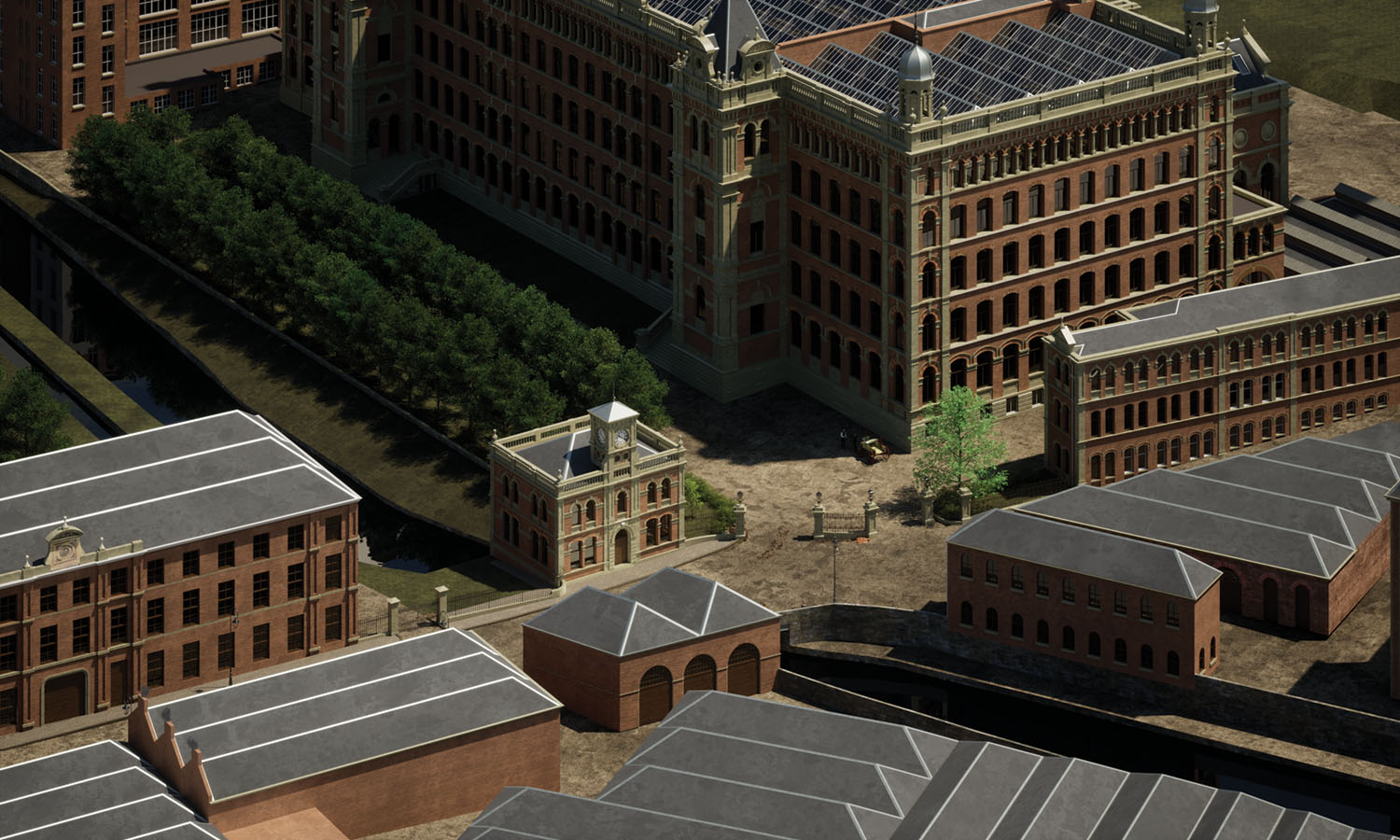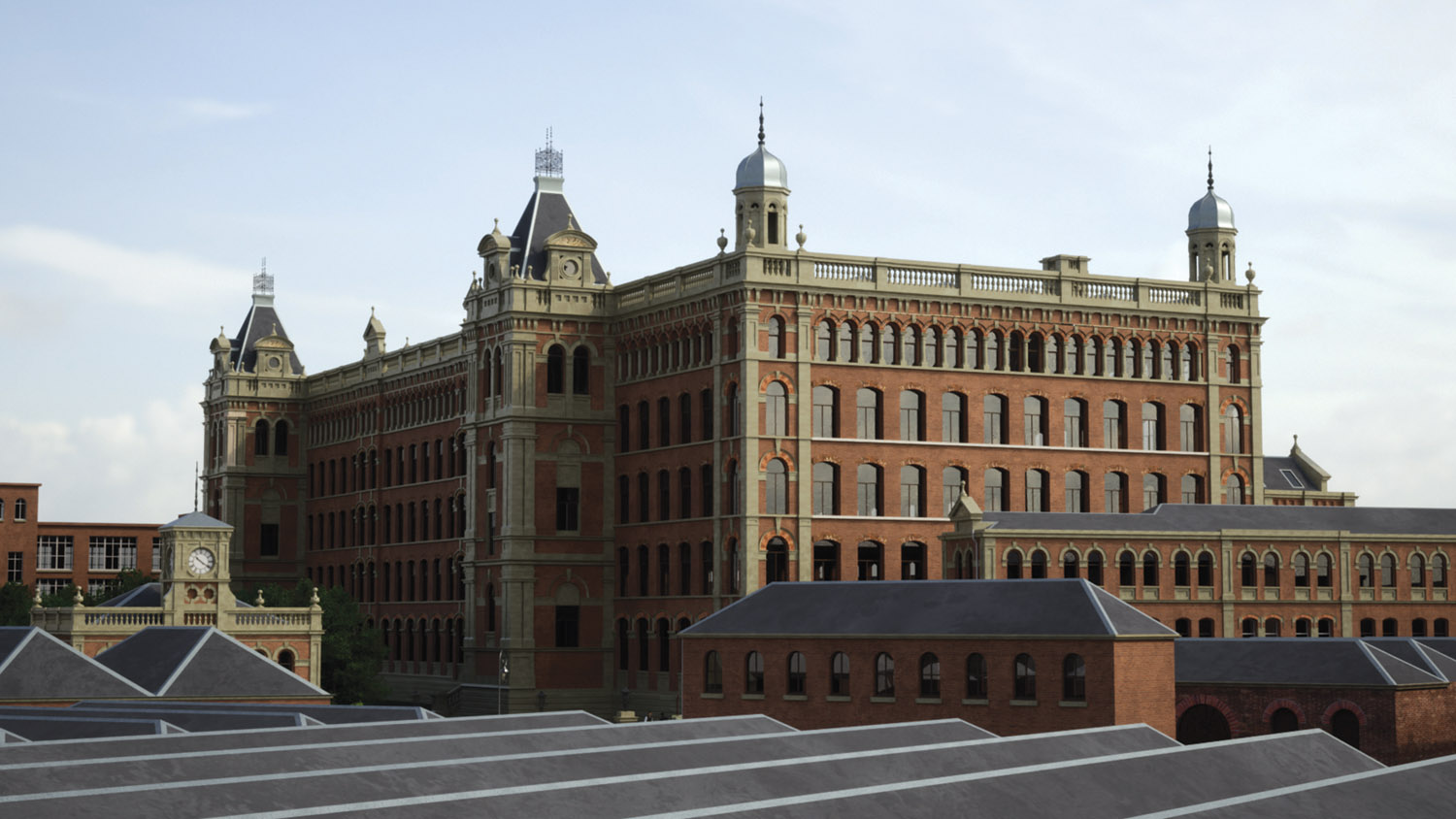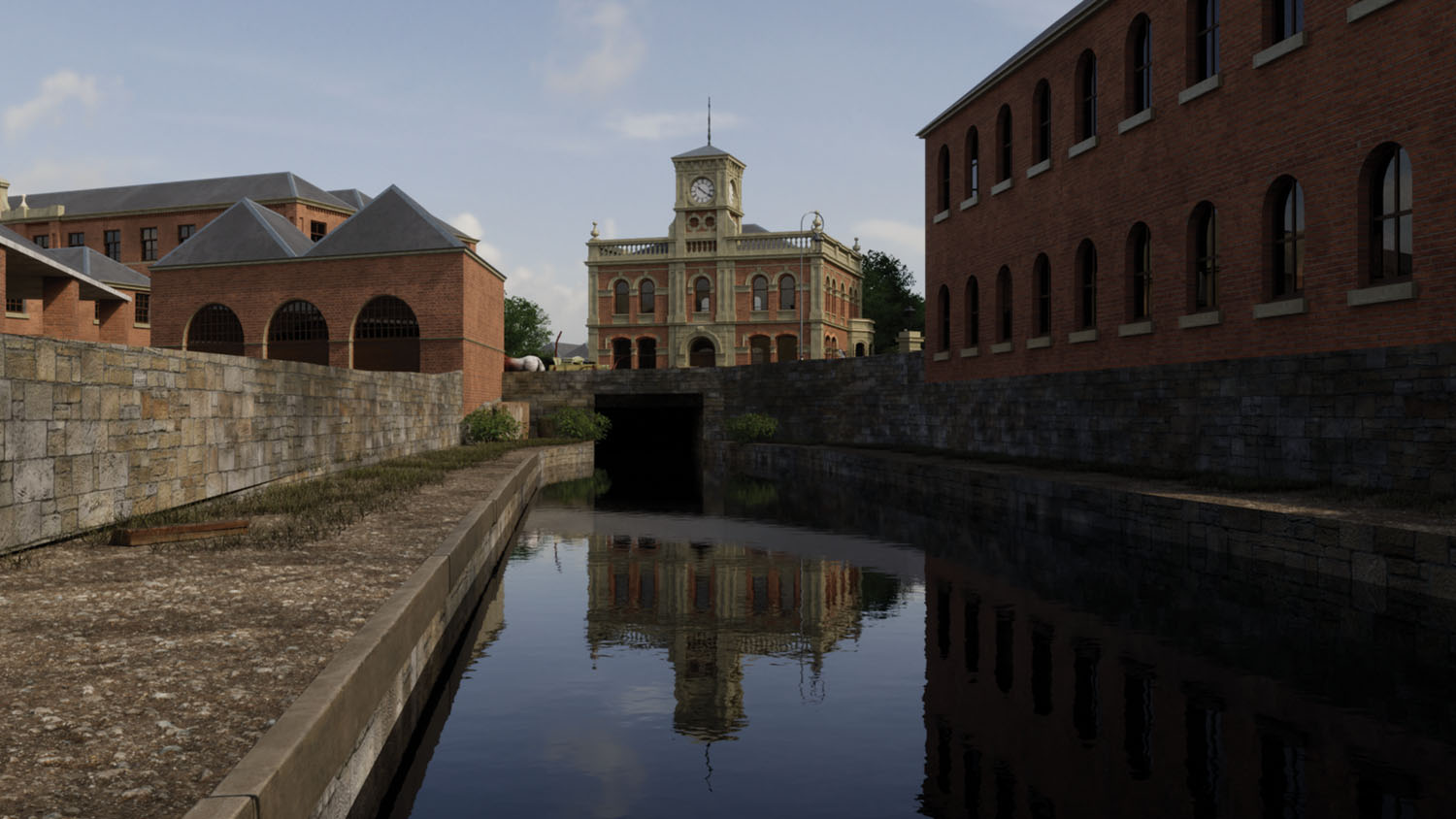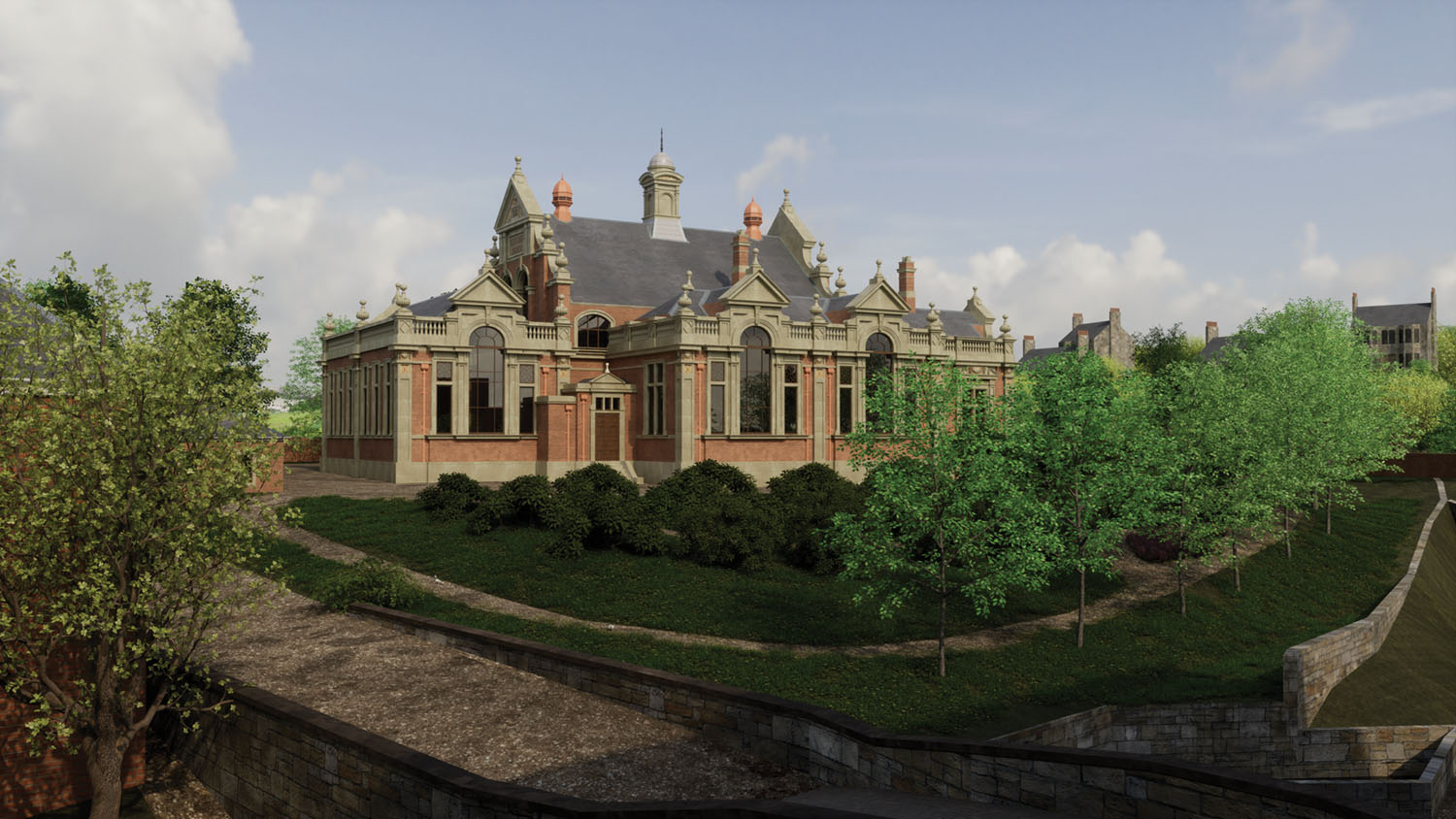
Ferguslie Thread Works – back to life in 3D
Richard Vassie, Cameron Swanson and John R Hume talk to us about Ferguslie Thread Works and their place in both local and international history
When it comes to Renfrewshire, it’s safe to say that we don’t shy away from our proud industrial history, particularly as it pertains to our storied relationship with thread.
Once perched at the centre of this thriving global industry, the indelible marks of our region-wide expertise in exports such as cotton and silk can be seen across our street names, emblems and even the moniker of this very magazine.
But while some of the structures that kept the town ticking have been painstakingly preserved and subsequently earmarked for reinvention, one monolithic stronghold for Paisley’s thread endeavours has long since disappeared from our skyline.
Once at the epicentre of operations, Ferguslie Thread Works were originally formed by Mr James Coats in 1826 and began from relatively humble beginnings.
Yet within 19 years of construction commencing, its frontage had grown from 56 feet and three flats to a massive three acres. Let’s not forget that at one point in the early 20th century, J&P Coats was the third largest company in the world.
- Café 77 owner Scott McFarlane reflects on 1 year in business
- Kirstin Innes talks writing, activism, Renfrewshire and more
- Washington – The Sound of Renfrewshire
Despite its continued expansion and the number one spinning mill itself eventually being recognised as a Grade A-listed building of European Importance, very little of the former workplace remains in our material world. Instead, they live on in the recollections of those who worked in the mill or were otherwise impacted by their presence in the town.
“Ferguslie Thread Works started life in 1826, becoming J. & P. Coats in 1830,” wrote Richard Vassie of the Paisley People’s Archive. “It stood for 158 years, survived two world wars and was on the frontline of major changes in the industry.
“Alas, the thread that bound the site to the company was finally cut in 1984. Today most of the Victorian mills are long gone, now forgotten by many and unrecognisable to the younger generation, who grew up without parents who worked for the company.
“Today, only three of the smaller buildings are left standing. The Counting House, built in 1890, Bridge lane Gatehouse, built in 1887 and the North Gatehouse built in 1858. Additionally, part of the gable end of the stable block, built in 1858, still stands as a monument of what once stood on this thriving site.”

Ferguslie Thread Works ©Cameron Swanson
Now, 36 years after it closed its doors, the pivotal place that this long demolished site had in our area and the world at large is being spotlighted through a stunning, 3D recreation of the buildings by the man behind the Paisley Buildings Facebook community, Cameron Swanson.
A stunning rendering that will not only amaze those who’d never bore witness to the mills, but spark wistful memories in the thousands of people who remember them with fondness, Cameron’s decision to take on this project comes from his deep-seated passion for the conservation of our architectural wonders.
“For my generation, it can be hard to picture the past and I’ve always thought there are better ways to visualise it”
“I got in touch with Richard Vassie to discuss a built heritage group in Paisley that’d take on restoration projects. It’d be along the lines of what Glasgow Building Preservation does, in terms of being a charitable developer. It seemed like Paisley was missing that,” he explained.
“Richard was really engaged with heritage and knew a lot about the mills and after we got talking about my skill set, the idea of recreating one of them seemed to be plucked from thin air.
“I’d had all these ideas about trying to envision what Paisley used to look like as given that I was born in 1996, there’d been drastic changes that I never saw. For my generation, it can be hard to picture the past and I’ve always thought there are better ways to visualise it.
“It’s so hard to orient yourself in photos as they’re 2D and you don’t get a sense of the space in terms of where they are in relation to other things. So, that’s where the Mill project came from.
“I’d been 3D modelling since I was 14, creating things like Paisley Abbey and the Town Hall for Google. It was all done on the exact same software that I use to this day, but I’ve just gotten a lot better at it with practice (laughs).”

Ferguslie Thread Works ©Cameron Swanson
Courtesy of the new 3D flyover video that he’s unveiled, the sheer scope of these buildings can now be comprehended once more. In the wake of unveiling his work to the world, Cameron has been left bowled over by the response that his creation has received online.
“It’s been quite surprising and heart-warming. I’d shared it on all different platforms but on Facebook, it was all former workers that had commented on it.
“Either that or people who had relatives going back generations that’d told them stories, so it was great to see all of that flooding into the comments section.
“The one thing that is missing with this at the moment is that sense of an oral history, so I believe that Richard has plans to integrate that into the flythrough and make it a bit more robust.
“We’ve got lots of different ideas about what we want to do, but they’re all focused on making it a bit more engaging. The model’s there and always will be, so the possibilities for its use are endless. The way that technology is developing, especially around VR, it’s just amazing.
“One of the big intentions behind this is to show people what we’ve lost. The only thing that does concern me is that this is almost a replacement and it doesn’t matter about conserving.
“For me, that’s the opposite of what we’re trying to do as it’s no substitute for something real. We hope it encourages people to look at what they have around them now and care about it a bit more.”

No.1 Spinning Mill and Engine Room ©Cameron Swanson
Although many of those who’ve been invested in the project’s rollout have been based locally, one man that is very enthused by the concept is famed photographer and former Chief Inspector of Historic Buildings for Historic Scotland, John R Hume.
Possessing a near encyclopaedic knowledge of Scotland’s industrial heritage, John photographed the mills from the 60s through to the dying embers of their usage.
Having fleetingly worked for J&P Coats in the dyeing laboratory of the Anchor Mills, he’d make his first trip to the lauded Ferguslie site six years on when he contributed to Dr John Butt’s publication, The Industrial Archaeology of Scotland.
At this stage, he was not permitted to enter any workspaces and wouldn’t cross the threshold of any of its vast network of buildings until 1984. By then, he was appointed to lead a team known as The Scotland Industrial Archaeology Survey out of Strathclyde University.

Half Timers’ School viewed from the canalside or The Moorings ©Cameron Swanson
Upon hearing of the mill’s impending closure, he requested the chance to finally head inside and capture its interior. Along the way, he found both remnants of its glory days and the ravages of industrial decline.
“I spent several hours taking the photographs, which are now in the HES collection,” John declared. “My recollection is that this was the last day of operation for the mill and there was a powerful sense of it being the end of an era.
“What struck me from my first experience from outside the perimeter of the mill complex was the extraordinary dignity of the buildings, both individually and collectively.
“The earlier mills, the L plan block, which originally had a clock on the north front, were included in Sir John Stirling Maxwell’s pre-second world war book Shrines and Homes of Scotland.
“It was the only industrial building so honoured and as far as I know, the first recognition of industrial buildings as architecture in Scotland.
“I was impressed with the distinction of the Number One Spinning Mill and when, in 1984, I was able to see inside it and its engine house, I was even more astounded both by its scale and the care taken by both clients and architects to produce a thoroughly functional and at the same time, distinguished building.

Ferguslie Thread Works ©Cameron Swanson
“What is very important to me is the extraordinary virtuosity of the design of the mill engine and its house,” he continued. “It was constructed by Fullerton, Hodgart & Barclay in their Vulcan Foundry and is probably the most beautiful combination of mill engine and engine house ever made and a superb instance of the care taken by J & P Coats.
“The thread, while almost invisible, was at the heart of western civilisation as it developed in the 19th and early 20th centuries.
“I am delighted to hear of the virtual reality recreation of The Ferguslie Thread Works,” John affirmed. “I’m fully supportive of it.”
With ambition and enthusiasm to spare, there’s no telling where Cameron and Richard will take their project from here. Whatever the case, we can only hope that the model – whether transplanted to VR or other formats – will not only reinforce the mills’ historical significance, but lead us to safeguard our architectural treasures in the future.
To view Cameron’s breathtaking creation, visit Paisley Buildings on Facebook or on Twitter. For more from Richard, visit paisleypeoplesarchive.org
This featured appeared in Mill Magazine issue 15, March April 2022.
